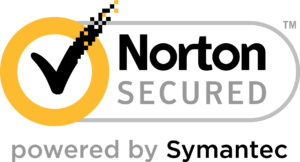High-quality human connections benefit people, organisations, and the bottom line. Hence, leaders must put this on the company’s agenda. An approach to business known as ‘human-centred business’ emphasizes the importance of building a culture of trust, respect, and compassion. Not only does this improve the wellbeing of employees, it also improves the business’s bottom line. However, a human-centred approach requires a bit of management know-how.
Auditing people processes
To become more human at work, companies should revamp their physical spaces, offer quiet areas, and audit their people processes. Similarly, they should update their travel policies and meal limit restrictions, and sunset practices that undercut employee trust. After all, companies have big goals to meet and would be more successful if they have engaged, valued employees. Here are some ideas to improve your workplace culture and improve your bottom line:
Create a culture of trust and respect between the audit team and the auditee. When both sides are engaged in the audit, the process becomes more efficient and less time is spent in battles over potential audit findings. In addition, active listening and collaboration help the auditors and auditee identify the root issues of the problems and formulate better recommendations. In addition, their reports become more valuable to both sides, since they are not filled with nitpicky audit findings, but are seen as helping the organization move forward.
Celebrating diversity
When it comes to fostering an inclusive work environment, embracing diversity in your workforce is a must. Research has shown that having different perspectives on problems and ideas improves performance. Whether your company is small or large, having a diverse team can improve your business. While it may be intimidating to hire people from different backgrounds, it is important to consider the benefits of such a change. To celebrate diversity at work, consider the following tips.
Celebrate diversity by implementing a diversity calendar. Create a diversity calendar for employees to view and share information on cultural events and holidays. Share pictures of employees’ families celebrating their own holidays and educate others on the significance of the holidays.

Be sure to include everyone, as excluding some people from participating can create an exclusive work environment. To promote diversity in the workplace, consider these ideas for creating a positive culture at work. Once you’ve decided to implement a diversity calendar, you can start planning educational events for your employees. For example, you can hold lunch and learn events that invite thought leaders to speak about their experiences or cultures.
Create an internal communications plan. Share the calendar with employees and share it with HR. Employees will be more likely to participate in diversity events if they feel they belong to a group. To foster inclusiveness and diversity, make it a priority for every department in your company. For example, you can create an employee resource group for women who work in finance. You can also create a messaging channel for employees to discuss diversity-related events.
A workplace culture that celebrates diversity is a key to boosting employee morale, engagement and the success of an organization. Today’s workforce is increasingly diverse – the percentage of minority workers will double by 2020 and the number of Hispanic/Latino employees will increase from six percent to 17 percent by 2020. If you fail to celebrate diversity, you will be excluding potential talent. Moreover, a diverse workforce will attract a wider variety of ideas and perspectives.
Lifting co-worker’s spirits
There are several ways to uplift the spirits of co-workers at work. Handwritten notes are an excellent way to communicate positive messages. While positive emails or texts are great too, they don’t have the same emotional impact as handwritten notes. It also shows you’re thoughtful. Even the smallest gesture can go a long way in raising someone’s spirits. Keeping these gestures in mind can go a long way.
Managing performance
Managing performance to be more human at work involves giving employees the tools to achieve their goals. These tools may include a knowledge base, onboarding presentation, mentorship program, employee resource group, and process documentation. Communication guidelines and branding assets can also be helpful in the management of performance. These tools can also help employers understand the needs of their employees and better match them to the right position within the company. The key to effective performance management is to ensure everyone has access to the essential information.
A commitment to employee engagement is a critical first step in building a culture of human-centeredness. Human-centered performance management requires an employee-centric approach to maximize the experience and impact of employees. This means embracing the latest HR technology and the people sciences to gain insights into people and identify opportunities for meaningful change. The three toolkits in the Humanity at Work ebook are based on real-world examples and include templates.
In a recent study, Accenture, a Minnesota-based distributor with over 150,000 employees, ditched traditional performance appraisals in favor of a more human approach. The company replaced annual reviews with more frequent, interactive conversations that foster a better relationship between employee and manager. Managing performance to be more human at work also means addressing employee issues before they become a problem. A person-centered approach is more likely to produce better results than a robot-focused approach.


